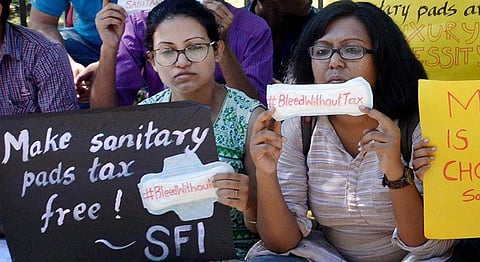
- HOMEGROWN WORLD
- #HGCREATORS
- #HGEXPLORE
- #HGVOICES
- #HGSHOP
- CAREERS
- ABOUT US
- CONTACT US

After months of outrage, protests and petitions the GST Council on Saturday exempted sanitary napkins from the Goods and Services Tax that was implemented a year ago. The previous tag of ‘luxury product’ attributed to sanitary napkins and tampons, basic necessities of proper menstrual hygiene for women has now been removed – a move that is being celebrated by women across the country.
While we rolled our eyes at the thought of menstruation being considered a ‘luxury’ for women in any way, the fact remains that in India, access to menstrual products is a luxury many of us take for granted. The sad truth is that out of an approximated 497 million Indian women, only 12 percent use sanitary napkins/tampons. And it’s women in rural India that suffer the most.
A study by the Indian Council of Medical Research (ICMR) 2015-2016, found that 93 percent of these women don’t use proper sanitary pads. With a lack of information, accessibility and finances, they often resort to using rags, pieces of cloth, husk, sand and even ash. Reproductive Tract Infections (RTIs) are 70 percent more common among women who use such unhygienic materials and 70 percent of all reproductive diseases in India are caused by poor menstrual hygiene, which affects the maternal mortality rate as well. Girls are typically absent for 20 percent of the school year, most of them even dropping out of school after the 5th grade, when their menstrual cycle begins.
We can only hope that tax-free sanitary products will increase access to proper menstrual hygiene products that are also economically viable for women and young girls across social classes. There are many initiatives and organisations that are making affordable and sustainable sanitary napkins in India, with awareness campaigns for menstrual hygiene also taking place, fighting to break the taboo that has surrounded menstruation in India for far too long.
Feature image credit: PTI via News18
If you liked this article we suggest you read:
